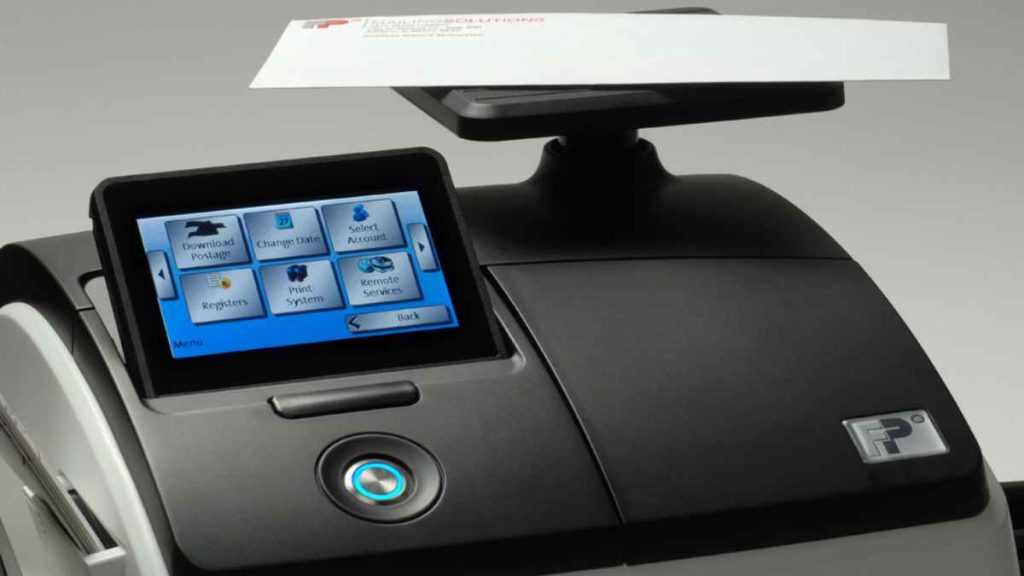A postage meter or a postage machine is a mechanical device used to create and apply physical evidence of postage to mailed items. They are regulated by national postal authorities. For example, in the United States, the United States Postal Service requires that postage meters comply with requirements outlined in Title 39 of the Code of Federal Regulations.
They typically print an adhesive label or postage stamp, which is then affixed to the mailed item. This process is generally known as “franking”. A postage meter cannot be bought but instead can be rented or leased from a postage provider. The cost of renting a postage meter varies depending on the model, but are generally available for around $160 per month on average.
Types of Postage Meters
There are three main types of postage meters: desktop, integrated, and web-based.
- Desktop postage meters are the most common type of postage meter. They typically connect to a computer via USB and use software to print labels or stamps. Some models also allow for the printing of envelopes and other documents.
- Integrated postage meters are standalone machines that do not require a computer connection. They typically have a built-in keyboard and display for inputting data and printing labels or stamps.
- Web-based postage meters are the newest type of postage meter. They connect to the internet and allow users to print labels or stamps from any location.
Postage Meter Benefits
There are several benefits of using a postage meter, including:
- Accuracy – Help to ensure that the correct amount of postage is applied to each item. This can save money on postage costs and avoid delays in delivery.
- Convenience – Can be used to print labels or stamps from any location. This can save time and provide flexibility for businesses that have multiple locations.
- Security – Typically have security features that help to prevent fraud and unauthorized use. For example, some models require a PIN code to be entered before printing labels or stamps.
Postage Meter Limitations
There are some limitations to using a postage meter, including:
- Cost – The initial cost of renting or leasing a postage meter can be expensive. Additionally, there may be additional costs for supplies, such as labels or stamps.
- Training – Postage meters typically require some training to use. This can be time-consuming and may require the assistance of a provider or other expert.
- Dependency – Postage meters typically rely on electricity and may not work during a power outage. Additionally, they may require regular maintenance and repairs.
Despite these limitations, they can be a convenient and cost-effective way to manage mailing needs for businesses of all sizes.
Conclusion
A postage meter is a mechanical device used to create and apply physical evidence of postage to mailed items and are regulated by national postal authorities to ensure accuracy. There are three main types of postage meters: desktop, integrated, and web-based with the most common being desktop models that connect to a computer via USB.
Postage meters have several benefits including accuracy, convenience, and security and are available for around $160 per month on average. There are some limitations to using a postage meter such as cost and dependency but they can be a helpful tool for businesses of all sizes.

